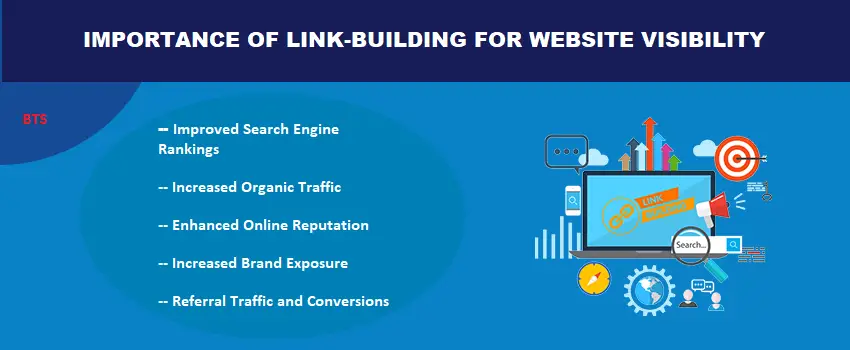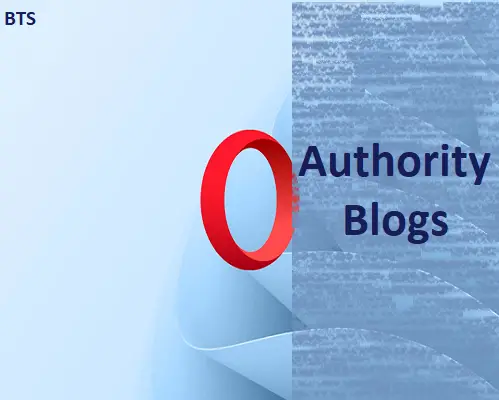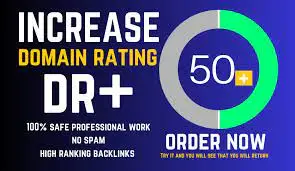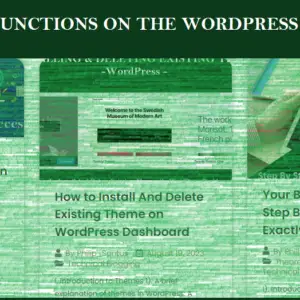I. Introduction to Link Building:
Link building is the currency of the internet. That is why the number one difficult thing to achieve when getting started as a new blogger is getting your first backlinks.
In this extensive lesson as always, we are going to be talking about link-building from an understandable perspective.
A. Definition of Link Building:-
This is a process in search engine optimization (SEO) which involves acquiring hyperlinks from other websites to your own website.
These hyperlinks are often referred to as “backlinks” and act as pathways that connect different web pages across the internet.
For our information, link building is a fundamental aspect of SEO practice because, search engines like Google consider backlinks as a thing to use in rating a website’s authority, relevance and popularity.
There is a reason why for practising link building, and this reason is to increase the number and quality of backlinks pointing to your website.
Because when reputable and relevant websites link to your pages, search engines will eventually perceive your site as more trustworthy and valuable, which can lead to higher search engine rankings. This will enable an increase in organic traffic to your website, improve visibility, and enhance your overall online presence.
We have to remember that link building encompasses various strategies and techniques, and these include outreach to other website owners, creating valuable content to attract natural links, guest blogging, social media promotion, and participation in industry directories or forums.
So as a blogger, you should understand that the process requires a balance between quantity and quality, because, search engines value links from authoritative and relevant sources more than from low-quality or spammy sites.
With the extensive definition above well stated, let us bounce into the importance of link building for website visibility.
B. Importance Of Link Building For Website Visibility:-

Below are five major reasons why link building is important for website visibility:
— Improved Search Engine Rankings: When your website earns high-quality backlinks from authoritative and relevant sources, it signals to search engines that your website is reputable and trustworthy.
— Increased Organic Traffic: When other websites link to your content, it creates additional pathways for users to discover and visit your website.
— Enhanced Online Reputation: Endorsement from trusted sources that you linked back can positively influence how users perceive your brand and increase your credibility in the eyes of your target audience.
— Increased Brand Exposure: When your website is mentioned or linked to other authoritative websites, it exposes your brand to a wider audience.
— Referral Traffic and Conversions: When users click on links from other websites and land on your pages, they have the potential to convert into leads, customers, or subscribers.
Having reeled out the five major importance of link building, let’s actually start discussing how you can start building backlinks assuming you are a newbie who had zero authority recognition in your website.
II. How To Get Backlinks With Zero Authority Blog. (Link-Building Strategies):-

Before going deeper into this, there are certain factors we need to consider or talk about:
1) For proper understanding let’s talk about what hasn’t changed in SEO (search engine optimization) in less than ten years.
And there are two factors that haven’t changed since then they are:
- Content.
- And Links.
2) And what are the ranking factors that matter? They are:
- Site Speed.
- Web layout.
- And Semantic keywords.
BLOGTOSTAY TIPS:–

The formula for ranking should come in this format: PUBLISH->BUILD LINKS->UPDATE->RANK->MONETIZE.
3) Link Building Machine Process:
- Guest Post = Which is the engine.
- And Partnership = Which is the fuel.
4) Link Velocity = This is how quickly you are getting links. Remember, the old idea of writing great content with infographics and all those stuff is not really the case anymore. Well, it might be the case if you have established authority in blogging before.
5) Types Of Link Building:
- Passive Link Building: Allowing people to link to you first without reaching out.
- Assertive Link Building: Leveraging link building. This is actually putting yourself out there by requesting people of similar niches, to enable you to have guest posts or insertion to their blogs.
Then why are we getting links in the first place? Assuming this is our question. Basically, this is to help our content rank on search engines. For example, Google, so we can monetize and make money.
Ok, well stated. Let’s outline the link-building machine process for proper understanding before proceeding.
LINK BUILDING MACHINE PROCESS
- We should understand how to do our outreach.
- We should know what link building even means.
- Learn how link building works in 2023 and beyond.
- Know how the Guest post is the engine.
- And what makes partnership the fuel to the engine?
BLOGTOSTAY TIPS:- We should know that links are basically built on partnership and connection or people paying for links. (Buying or trading links).
The reason why a guest post is an engine is that you need value to trade value. Because randomly dropping links on already written content will never clarify you as an authority over that written content.
Now, How Do We Get Those Backlinks?
You would like to build as many links as possible from most of the authority sources available right?
This is because the higher the domain rating of the site linking to you the better. For example; a domain rating of fifty (50) is much more valuable than a domain rating of ten (10).

But what do you think about this speculation that has been going on put out by internet-savvy individuals that, you don’t need backlinks or guest posts to grow your blog?
They were busy stressing that you could go create your content, do SEO optimization and people will find you and you make a bunch of money through monetization.
Well, that is not really the case, the truth still remains that you need backlinks to build authority, which is one of the pillars of SEO.
BLOGTOSTAY TIPS:- Two pillars of link-building SEO:
-> (ON-PAGE-SEO:- links actually put in your articles)
-> (OFF-PAGE-SEO:- the links that come into your blog from other websites)
So, if you are just starting out with zero (0) domain rating authority, the most important thing to do is to actually get backlinks to your blogs.
BLOGTOSTAY TIPS:- With no backlinks, will you be getting traffics? (YES). And will you be making more money? (NO).
So there is a big differentiation where traffic is not equal to revenue. There is a need to do backlinks if you want to be a successful blogger. Just the fact.
HOW DO YOU DO IT WHEN YOU ARE JUST STARTING OUT?
As a newbie in blogging, you will not have any leverage (Authority). I hope I’m right here and not provoking any interest right?
Ok, it’s important you reach out to companies with leverage at hand (something to give) when starting out and seeking backlinks and guest posts.
Now, we have to start with the strategies you can apply to actually do this right:
(A). FIND YOUR LEVERAGING POINT=>

Remember that when you are starting out you have no leverage (something to give) and equally no authority which makes it difficult for Google to start ranking your blog.
BLOGTOSTAY TIPS:- Algorithm ranks basically based on how many links are pointing back to your website.
So as a beginner below are your possible leverage points:-
1). Professional Experience:-
In this aspect now you have to leverage your professional experiences either in work or any field as a means to give back and maintain authority when requesting for link building either through guest posts or link insertion.
Example:
“You don’t say. Hello, I’m Philip Santus from Blogtostay with no traffics and requesting a guest post.” when writing to any of the websites.
Rather, you can say:
“Hi, I’m Philip Santus from Blogtostay with over a decade plus blogging experience. Internet marketer and web developer/programmer.”
Something of that nature portrays an element of professionalism in a particular field.
2). Unique Perspective:-
Remember, each and every one of us has had personal experiences that are unique to us. Declare exactly what you are known for some years.
Example:
“I’m an old blogger who started out in 2009.”
That could exactly tell my experience in blogging for long. Find something unique in your life that you can use as leverage to build credibility.
3). Freelance Work:-
Find sites that accept guest posts and become a regular contributor and write a few articles and eventually trade links.
(B). GETTING THE SNOWBALL ROLLING=>

Now having learned the strategies to scale out our messages, how do we get the snowball (process) rolling?
There are two ways to get the process rolling and they are:
1) Reaching out to the right sites and people:-
Remember once more that when you are new and just starting out, you don’t have to reach out to big-wigs like Shopify, Forbes or somebody that is already huge.
Maybe, you reach out to new emerging blogs and brands in your niche.
EXAMPLE; If I’m just starting out and I’m a software blogger, I’m not going to reach out to Hubspot, or Wix because they will not answer me.
2) Sending Personalized Email Messages:-
At least trying to send a hundred emails per month and getting five guest posts from their emails is not actually bad.
Getting two to four guest posts per month when you are starting out is actually a good goal.
Then let’s talk about the actual action plan.
(C) ACTUAL ACTION PLAN=>

The action depends on volume and consistency not really the perfection. This means, the number of messages you sent matters not even the perfection in the grammar of those messages.
EXAMPLE: If you are reaching out to all the sites and they are all asking for money, then you are probably reaching out to the wrong sites.
This is how the action plan should go:
1). The first start is to create a list of hundred (100) target sites to link to.
Remember, it should not be the highest in the highs of your niche. Just the middle and equal in your niche.
2). Find emerging new blogs and company websites you want to be an affiliate with.
EXAMPLE: Google one hundred blogs on your niche to do guest posts for.
Or with Ahrefs, at the left-hand sidebar menu, click on COMPETING DOMAINS. With this, you can determine a website on the same domain niche as yours.
3). Gather Contact Information:
This is the boring part but unfortunately, you have to do it. This should be done primarily with LinkedIn (social media).
EXAMPLE: Let us use Wix as a case study. Go to their Linkedin page, click on it and go to their employee’s page.
Search for “content” on the search form of Linkedin to locate their content managers.
Send them a “connect signal” to get approved and be connected with them.
4). Start Sending Your Targeted Messages:
The targeted message format should look like this below:
“Hello,
My name is Philip Santus.
I’m a pro blogger with over a decade of experience. Started out in 2009 as a web developer/programmer.”
Just who you are or the skills you’ve learned that define you as an authority.
Find that unique leverage point that makes you a professional in what you claim to do.
And remember to be friendly and don’t make your message so direct and abusive.
CASE STUDY: Do not go with a statement like; “I need a guest post from you” or something of that nature.
Do not be asky, if there is any word like that.
You can say;
“Hello,
I try to write a sample of guest posts every month. I want to know if you are open to accepting guest posts.”
You can go ahead to sight examples of guest posts you’ve done by dropping URL links linking back to them in your messages.
BLOGTOSTAY TIPS:- Most people sometimes don’t answer the first email. Make sure you send follow-up emails. Maybe three days or a week later.
Remember, the procedure we have to follow is:
— We build a list of hundred sites.
— We gather the contact information.
— We connect with them on Linkedin.
— We start sending targeted messages.
Get your sites ready for links because link building is the currency of the internet.
Follow here to write a guest post or trade link insertion with Blogtostay for FREE.
Now, let’s look into the link-building tools and resources.
III. Link Building Tools and Resources:-

Remember, link building is an important aspect of search engine optimization (SEO) and can help improve your website’s visibility and rankings in search results. Below are some popular link-building tools and resources that you can utilize:
— Ahrefs: A comprehensive SEO tool that offers a range of features including backlink analysis, keyword research, competitor analysis, and content exploration.
— SEMrush: Another all-in-one SEO tool that provides backlink analysis, keyword research, rank tracking, and other SEO-related features.
— Moz Link Explorer: Moz offers a link explorer tool that allows you to analyze your backlinks, discover new opportunities, and monitor your link-building efforts.
— Majestic: Majestic is a backlink analysis tool that provides detailed information about your website’s backlink profile, anchor texts, and referring domains.
— Google Search Console: This free tool from Google provides valuable insights into your website’s performance in search results, including information about the backlinks pointing to your site.
— BuzzStream: BuzzStream is a link-building and outreach platform that helps you find influencers, manage your outreach campaigns, and track your progress.
— Pitchbox: Pitchbox is a robust outreach and link-building platform that assists you in finding relevant prospects, managing personalized outreach emails, and tracking your campaigns.
— Ninja Outreach: Ninja Outreach is a tool that helps you find influencers and websites in your niche, manage outreach campaigns, and build relationships for link-building purposes.
— HARO (Help a Reporter Out): HARO is a platform that connects journalists and bloggers with sources. You can sign up as a source and receive email notifications about media opportunities where you can contribute your expertise and earn backlinks.
— Guest posting opportunities: Many websites accept guest posts, allowing you to contribute content in exchange for a backlink. You can find guest posting opportunities by searching for relevant blogs and websites in your industry and checking if they accept guest contributions.
— Broken link building: Broken link building involves finding broken links on websites and suggesting your own content as a replacement. Tools, like Check My Links (a Google Chrome extension), can help identify broken links on a page.
— Content creation and promotion: Creating high-quality, valuable content that others would naturally want to link to is one of the most effective link-building strategies. Tools like BuzzSumo can help you discover popular content in your niche, while social media platforms and email outreach can aid in promoting your content.
Remember, effective link-building requires a combination of strategy, quality content, and relationship-building. While these tools and resources can assist you in your link-building efforts, it’s important to approach link-building ethically and focus on building genuine, valuable connections.
Then how can we measure and track link-building efforts? Let’s know how we can achieve that.
IV. Measurement and Tracking of Link Building Efforts:-

Very essential to track link-building efforts because this will enable you to evaluate the effectiveness of your strategies and understand their impact on your website’s search engine optimization (SEO) performance.
So below are some key steps and metrics to consider for measuring and tracking your link-building efforts:
— Define Goals: Start by establishing clear goals for your link-building campaign. Common objectives include increasing organic search traffic, improving search engine rankings, and enhancing domain authority.
— Link Metrics: Evaluate the quality and relevance of acquired links using metrics such as domain authority, page authority, Trust Flow, citation flow, and anchor text diversity.
— Organic Traffic: Compare traffic patterns and fluctuations after acquiring new links, focusing on the pages or keywords targeted by your campaign.
— Search Engine Rankings: Monitor your website’s search engine rankings for targeted keywords. Tools like Google Search Console, Ahrefs, or SEMrush can provide insights into your rankings over time.
— Referral Traffic: Track referral traffic from the acquired backlinks. Google Analytics or other web analytics tools can provide data on the number of visitors, session duration, bounce rates, and conversions originating from referral sources.
— Brand Mentions: Keep an eye on brand mentions across the web, even without a direct link. Tools like Google Alerts, Mention, or Brand24 can help identify mentions of your brand or website.
— Link Outreach and Response Rates: Monitor the number of outreach emails sent, responses received, and successful link placements secured.
— Conversion Tracking: Use conversion tracking tools, like Google Analytics, to measure the number of conversions generated from referral traffic acquired through link building.
— Track Link Acquisition: Use tools like Google Search Console, Ahrefs, Moz, or SEMrush to track the number of new backlinks, their quality, and their impact on your website’s overall link profile.
— ROI Calculation: Compare the costs associated with acquiring links (including time, resources, and outreach tools) with the benefits gained, such as increased traffic, rankings, and conversions.
Do not forget to regularly review and analyze these metrics to gauge the effectiveness of your link-building strategies.
A. Key Performance Indicators (KPIs) For Link Building:-
Key Performance Indicators (KPIs) for link-building can help you assess the success and impact of your link-building efforts. Below are some important KPIs to consider:
— Number of Backlinks: Do not forget to track the total number of backlinks acquired over time. This KPI indicates the growth and expansion of your link profile.
— Link Quality: Assess the quality of acquired backlinks by evaluating metrics like domain authority, page authority, Trust Flow, citation flow, and anchor text diversity.
— Link Diversity: Measure the diversity of your link profile by analyzing the types of websites linking to your site.
— Referring Domains: Increasing the number of unique referring domains can enhance the authority and credibility of your website.
— Organic Search Traffic: Track the increase in organic traffic over time, focusing on the pages or keywords targeted by your link-building campaign.
— Keyword Rankings: Assess the movement of your keywords in search engine results pages (SERPs) to determine the effectiveness of your link-building strategies.
— Referral Traffic: Evaluate the amount of traffic generated from referral sources.
— Conversion Rate: Measure the conversion rate of the traffic acquired through link building to assess the effectiveness of your links in driving meaningful actions.
— Brand Mentions: Monitor the number of brands mentions across the web, even without a direct link. This indicates the reach and visibility of your brand resulting from link-building efforts.
— Cost per Link: Calculate the cost per acquired link by dividing the total investment in link building (including time, resources, and outreach tools) by the number of acquired links.
Always make sure you select the KPIs that align with your specific goals and regularly track and analyze them to measure the effectiveness of your link-building efforts.
These KPIs will provide insights into the progress, impact, and success of your link-building campaigns and help you refine your strategies for better results.
V. CONCLUSION: Future Trends in Link Building:

A. Link-Building In The Age Of Voice Search And Mobile-First Indexing:-
In the age of voice search and mobile-first indexing, link-building strategies need to adapt to align with the changing search landscape. Below are some key considerations for link-building in this context:
— Optimize for Mobile Experience: Optimizing your website’s design, layout, and navigation for mobile devices to give users a positive experience can increase the chances of earning quality backlinks from other websites.
— Create Voice Search-Friendly Content: Voice search is becoming increasingly prevalent with the rise of virtual assistants like Siri, Google Assistant, and Amazon Alexa. To optimize your content for voice search, focus on creating conversational and natural language content that answers common questions.
— Target Featured Snippets: Featured snippets often appear at the top of search engine results and are frequently used for voice search responses.
Optimizing your content to target featured snippets by providing concise, well-structured answers to commonly asked questions can help increase your visibility and generate more organic traffic, leading to potential backlink opportunities.
— Optimize Local SEO: Voice search is often used for local queries, such as finding nearby businesses or services. Make sure your website is optimized for local SEO by including location-specific keywords in your content, optimizing your Google My Business listing, and obtaining backlinks from local directories or relevant websites in your community.
Remember, you have to adapt your strategies to provide a seamless mobile experience in this age of voice search and mobile-first indexing.
Create voice search-friendly content, and foster relationships with relevant influencers and experts. By aligning your link-building efforts with these trends, you can enhance your website’s visibility and attract valuable backlinks.
B. Role Of Artificial Intelligence In Link Analysis And Outreach:-
There is no doubt about it that Artificial intelligence (AI) has had a significant impact on various aspects of link analysis and outreach, providing valuable insights and streamlining the process. Below are some roles AI plays in link analysis and outreach:
— Data Analysis and Pattern Recognition: AI algorithms can process link data, identify link-building opportunities, and uncover link patterns that indicate potential spam or low-quality links. And this is used by SEO professionals to make data-driven decisions and optimize their link-building strategies.
— Automated Link Prospecting: AI can automate the process of finding potential link prospects by crawling the web and analyzing websites for relevance, authority, and other criteria.
— Natural Language Processing (NLP): AI-powered tools leverage NLP to analyze the content of web pages, anchor text, and other textual elements to determine link relevance and quality.
— Email Outreach and Personalization: AI algorithms can personalize outreach emails based on recipient data, previous interactions, and historical patterns. This personalization helps increase the response rate and build more meaningful connections with potential link partners.
— Performance Analysis and Optimization: AI-powered analytics tools provide insights into the performance of link-building campaigns. These tools can analyze data on referral traffic, conversions, and engagement metrics to assess the effectiveness of different link sources and outreach strategies.
— Link Quality Assessment: AI can help to assess various factors such as domain authority, relevance, spam score, and historical data to determine the quality of a link source.
Marketers who leverage AI-powered tools and techniques, can gain deeper insights, automate repetitive tasks, personalize outreach, and optimize their link-building strategies for better results.
C. Evolving Algorithms And Their Impact On Link-Building Strategies:-
Evolving algorithms, such as those used by search engines like Google, have a significant impact on link-building strategies. Search engines constantly update and refine their algorithms to deliver more relevant and high-quality search results to users. Below are some key ways in which evolving algorithms affect link-building strategies:
— Quality over Quantity: We all knew that in the past, link-building strategies often focused on acquiring as many backlinks as possible, regardless of their quality. However, modern algorithms prioritize the quality of backlinks over sheer quantity.
So search engines now evaluate the relevance, authority, and trustworthiness of the linking websites. This shift requires link-building strategies to prioritize acquiring high-quality, authoritative backlinks from reputable sources.
— Natural Link Profiles: Search engines are becoming more sophisticated in detecting unnatural link patterns and manipulative practices.
They aim to reward websites with natural link profiles that are earned organically.
Link-building strategies need to focus on building diverse and natural backlink profiles, with links from a variety of sources, including relevant websites, industry directories, social media, and authoritative publications.
— Anchor Text Optimization: Overusing exact-match anchor text can be seen as an attempt to manipulate search rankings. Link-building strategies should prioritize using varied anchor text that appears natural and aligns with the context of the linked content.
— User Experience Signals: Link-building strategies should focus not only on acquiring backlinks but also on ensuring that the linked content provides value to users and encourages engagement.
— Brand Authority and Signals: Link-building strategies should incorporate brand-building activities, such as PR campaigns, guest blogging on authoritative websites, and collaborating with influencers or industry experts.
— Social Signals: Content that receives social media engagement, such as likes, shares, and comments, may gain more visibility and attract natural backlinks. So link-building strategies should include promoting content on social media platforms to increase its reach and potential for link acquisition.
— Algorithm Updates and Penalties: Algorithm updates, such as Google’s Penguin and Panda updates, aim to penalize websites employing manipulative link-building tactics or engaging in spammy practices. It is crucial for link-building strategies to stay updated with algorithm changes and adhere to ethical and sustainable practices.
In conclusion, we should know that evolving algorithms have shifted the focus of link-building strategies towards quality, natural link profiles, user experience, brand authority, and diverse sources of backlinks.
This is to let us know that adapting to these changes requires a holistic approach that prioritizes valuable content creation, genuine relationship building, and ethical promotion of your website.
Thanks and remain blessed.
Please, Do not forget to Stay Blogging and never leave.








Magnificent beat ! I would like to apprentice while you amend your site, how
can i subscribe for a blog site? The account aided me a
acceptable deal. I had been tiny bit acquainted of this your broadcast offered bright clear concept
I saw similar here: dobry sklep and also here: dobry sklep
Thanks a lot dear.